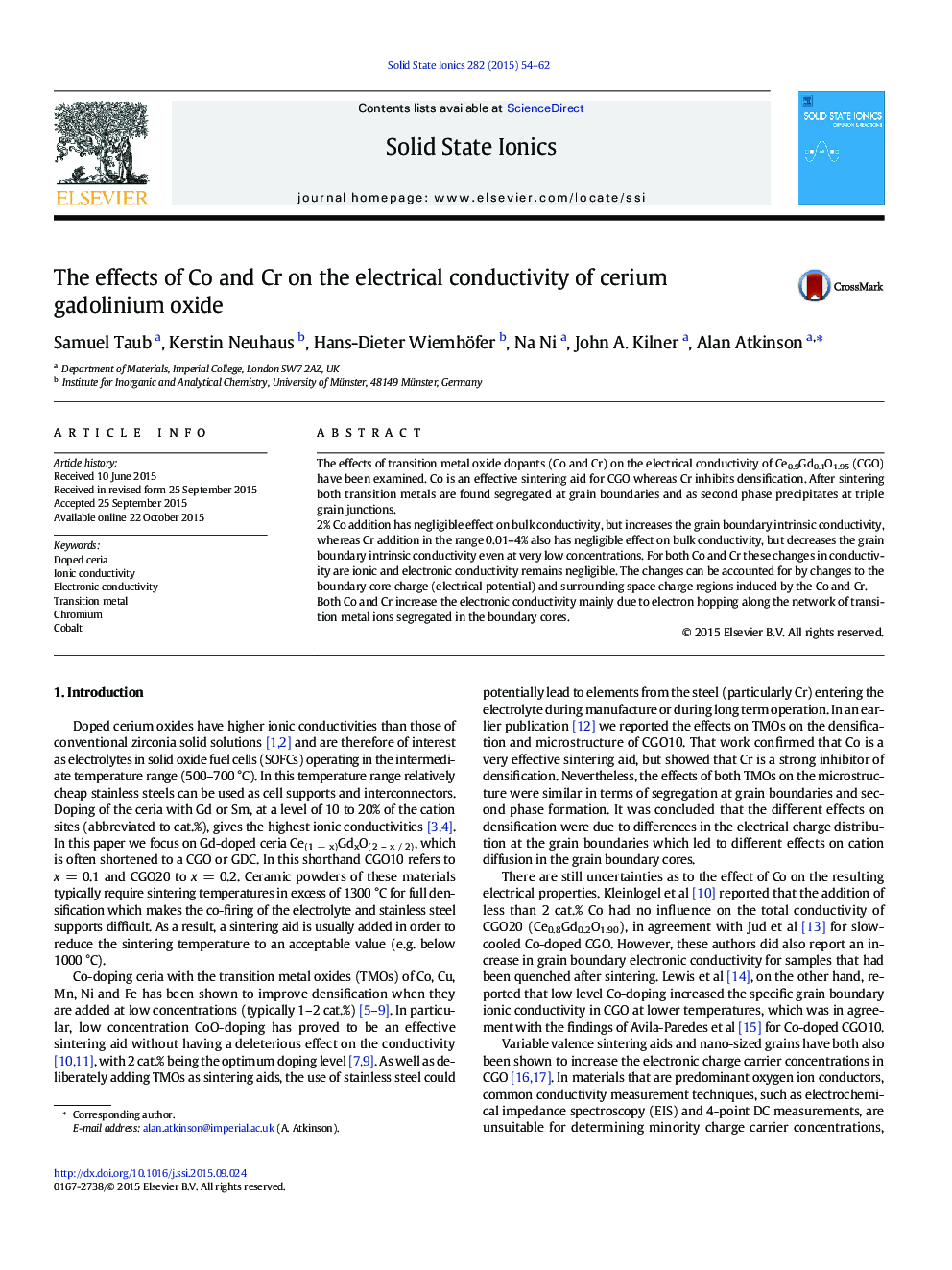| Article ID | Journal | Published Year | Pages | File Type |
|---|---|---|---|---|
| 1296246 | Solid State Ionics | 2015 | 9 Pages |
•Co increases the ionic conductivity across grain boundaries in gadolinium doped ceria whereas Cr reduces it.•The reduction in conductivity by Cr is significant even at concentrations as low as 100 ppm.•The effect of Co and Cr on grain boundary conductivity is due to modification of the boundary space charge.•The electronic conductivity is much lower than ionic conductivity even at concentrations of Co or Cr as high as 2 mol.%.
The effects of transition metal oxide dopants (Co and Cr) on the electrical conductivity of Ce0.9Gd0.1O1.95 (CGO) have been examined. Co is an effective sintering aid for CGO whereas Cr inhibits densification. After sintering both transition metals are found segregated at grain boundaries and as second phase precipitates at triple grain junctions.2% Co addition has negligible effect on bulk conductivity, but increases the grain boundary intrinsic conductivity, whereas Cr addition in the range 0.01–4% also has negligible effect on bulk conductivity, but decreases the grain boundary intrinsic conductivity even at very low concentrations. For both Co and Cr these changes in conductivity are ionic and electronic conductivity remains negligible. The changes can be accounted for by changes to the boundary core charge (electrical potential) and surrounding space charge regions induced by the Co and Cr.Both Co and Cr increase the electronic conductivity mainly due to electron hopping along the network of transition metal ions segregated in the boundary cores.
